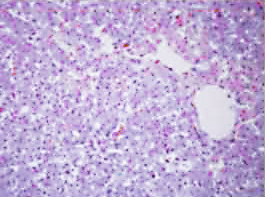Fitness
Dysfunctional Enzyme May Lead to Liver Disease – News Center

A dysfunctional enzyme may lead to nonalcoholic fatty liver disease in mice, according to a study published in Science Advances.
Nonalcoholic fatty liver disease (NAFLD) is marked by fat buildup in the liver that is not caused by heavy alcohol use and is one of the most common causes of liver disease in the U.S.; the National Institutes of Health estimates that roughly 24 percent of adults live with NAFLD.
Acetyl-CoA synthetase short-chain family member 1, or ACSS1, is an enzyme known to play a role in fatty acid synthesis in the liver. To better understand how this enzyme functions in NAFLD, investigators utilized a mouse model in which ACSS1 was altered to take in glutamine as a primary energy source.
After fasting for 48 hours, the ACSS1-altered mice displayed hypothermia and liver aberrations, including enlargement and discoloration, consistent with NAFLD, according to the study.
“In our study, we generated a novel mouse model in which we mutated lysine-635 to glutamine to mimic the constitutively acetylated stage of ACSS1 in vivo,” said Songhua Quan, PhD, research assistant professor of Urology and a co-first author of the study. “We observed that the male mice are smaller, with a higher metabolic rate and blood acetate and decreased liver, serum ATP and lactate levels.”
Next, investigators performed RNA sequencing on the mice and found that fatty acid metabolism was dysregulated and the cells appeared to show signs of advanced aging, hallmarks of NAFLD.
Upon analyzing the mouse livers, investigators found they increased fatty acid production and lipids commonly associated with NAFLD, according to the study.
Taken together, the findings show how ACSS1 dysregulation can lead to altered lipid levels, increased cellular aging and NAFLD, Quan said.
“Our findings highlighted the biological significance of ACSS1 acetylation in vivo, especially under metabolic stress,” Quan said.
Moving forward, Quan said she hopes the new model generated by the study will assist other investigators in better understanding NAFLD and developing drugs to treat it.
“I think our research may provide a valuable model for exploring the molecular mechanism underlying metabolic liver diseases and identifying potential targets for therapeutics intervention,” Quan said.
The study was supported by National Cancer Institute grants R01CA152601 and R01CA214025, as well as funding from the National Institute on Aging.










